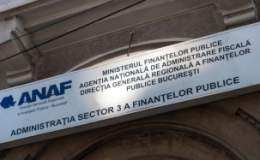NBR: Banks must acknowledge their past mistakes, even if their profits drop
The net interest margin for new retail loans in domestic currency (the difference between the interest income generated by banks and the amount of interest paid out to their lenders, for example deposits) increased sharply this year, to 7.3% in August 2009 from 2.4% in December 2008. Throughout this period, the interest margin for new loans and deposits in euro currency climbed to 4.1% from 1.7%.
“The banks are killing the hen that could lay golden eggs. They are so focused on lending the governmental sector in domestic currency, that it is absolutely natural to suck the life out of non-governmental loan since banks can invest in state securities in national currency and don’t have to take any risk with private clients”, said Valentin Lazea, at a conference organized by Ziarul Financiar and CEC Bank.
NBR’s senior economist also warned banks that “compensating the past mistakes with high margins is of no good for anybody”.
In terms of euro, the loan to deposit ratio fell from 2.09 at the end of last year to 1.85 in September 2009, while for loans in other currencies, the ratio climbed to 2.82 in September this year, from 2.79 at the end of 2008. System-wide, the loan to deposit ratio dropped to 1.23 in September 2009 from 1.31 in December 2009.
Banks� response: risks are high
Ghetea, CEC Bank: Margins measure risk
“We shouldn’t allow Romanians to borrow in another currency to that in which their income is paid”, said Radu Gratian Ghetea (photo), chairman of CEC Bank, one of the two credit institutions owned by the state.
“However, Ghetea continued, margins have always been metrics for the risk. Some banks call them risk margin, others call them profit and risk margin. In a crisis-hit economy, risks are enormous, and banks must react and be reticent when they take such risks. This reticence is reflected in risk margins because in the event of default, the bank has to have the money to cover its losses and make loan loss provisions”.
Rekkers, Banca Transilvania: NBR must cut the reserve requirements for lei to 2%
“It would be preferable if the reserve requirements for leu liabilities were cut to 2% in Romania. This is the RRR-level in the euro area and this is where Romania should be, especially if we want to resuscitate consumer interest for loans in domestic currency. It is a normal measure, especially if the inflation rate is falling”, said Robert Rekkers (photo down), CEO of Banca Transilvania. The current level of required reserve ratio for leu-currency liabilities for commercial banks is 15%.
The default rate for loans in domestic currency is twice higher than for loans in foreign currency, said Catalin Parvu, CEO of Piraeus Bank Romania, which would eventually lead to higher margins for riskier loans.
Oprescu, Alpha Bank: Default risk is factored in the market costs
“Before approving a loan application, you can’t ignore the default degree of the market segment to where the money will go. Therefore, the default rate, like it or not, is factored in the market costs”, said Sergiu Oprescu, CEO of Alpha Bank.
In Romania, the number of delinquent loans tripled over the last 12 months, to €1.55 bln at the end of September 2009.
Subsequently, banks’ loan loss provisions increased by 6.5% in August month-over-month to €3bln, and by 89.4% year-to-date, data provided by the National Bank of Romania show.
























































![HR [PLAY] Tech Workout - 11...](https://www.wall-street.ro/image_thumbs/thumbs/973/973fe0a3888d417feff63de42e814180-260x260-00-65.jpg?v=1713622983)










